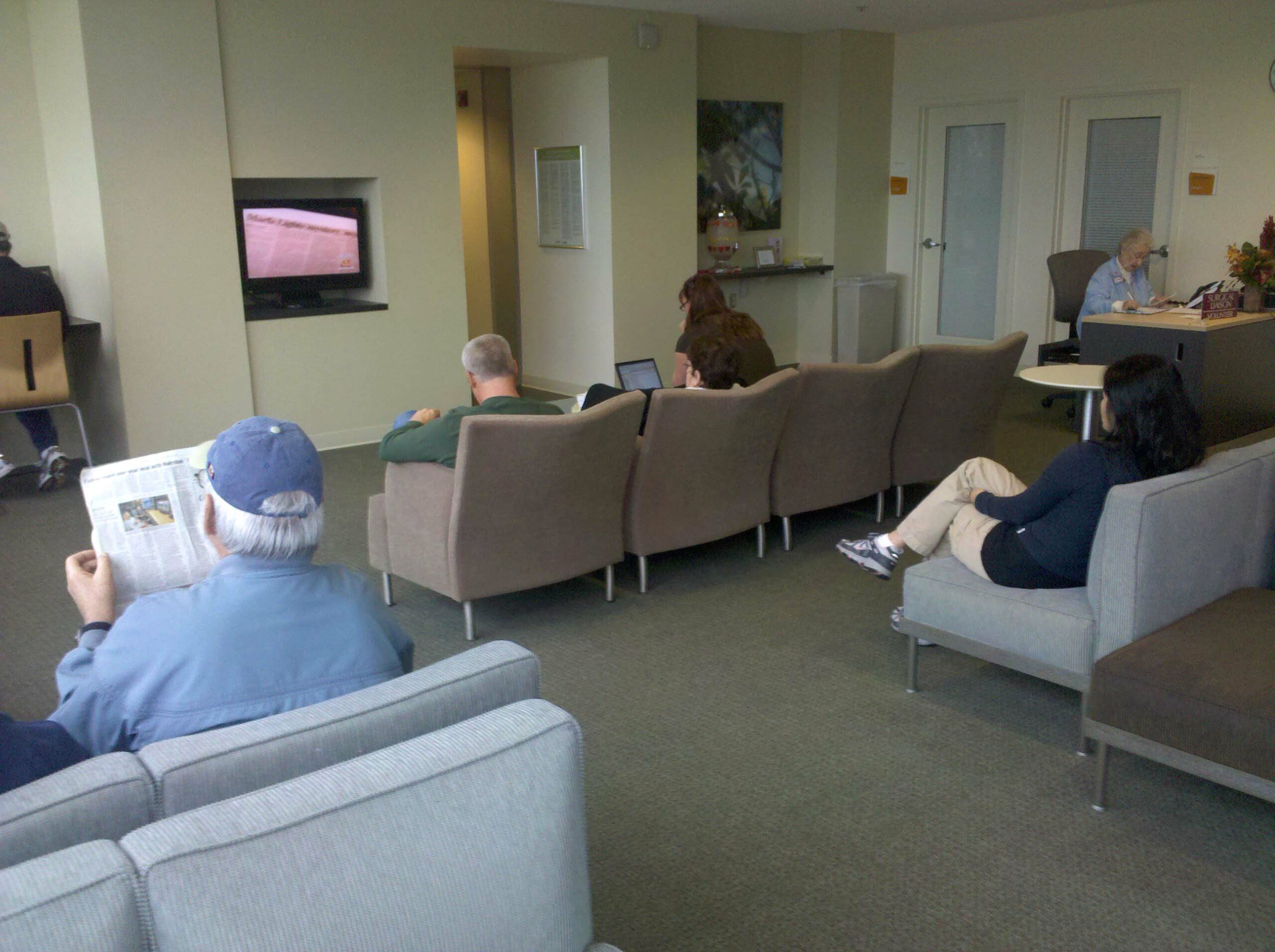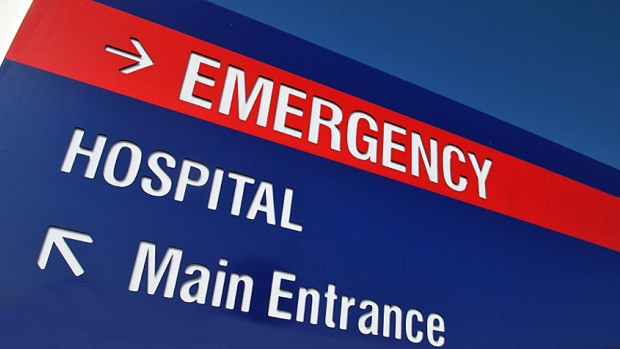The inside scoop on hospital triage
Connect Experts explores the system used by nurses to assess and priorize ER patients
It’s another packed evening in the hospital emergency room. You’re here with a painful cut on your hand, caused when you grabbed at a razor-sharp piece of falling metal tubing. You can’t help but notice that the busy waiting area is overflowing with patients and worried family members in equally dire straits.
Next to you, a mom sits anxiously with her toddler, whose tears, flushed face and bleary eyes suggest she has a fever. Across the aisle, an elderly man is coughing loudly into a tissue (causing you to secretly hope his illness isn’t contagious).
You’re called by the triage nurse, who tells you your swollen purple index finger should have been stitched days ago. She sends you back to the waiting room, smiling patiently as you ask how long until you see a doctor. “We’ll get you in as soon as possible, we have a lot of sick patients here tonight.”
Now, picture that you are the triage nurse for a moment. How do you determine who goes in next? Over the past 20 minutes alone, the following patients have arrived in the emergency along with the sobbing toddler with a temperature of 39.5C, a heart rate of 120/minute, sore throat and earache:
• A 30-year-old male with heartburn for two hours after playing hockey. He had two beer and hot wings after the game, and is now also nauseated and pale. He denies drugs use, smokes a pack a day and is diabetic. His blood sugar is fine
• A 75-year-old female with a fractured left hip after falling in the mall. Her leg is rotated and shortened but circulation and sensation to her foot are intact. There are no other injuries and her vital signs are stable
Out in the waiting room are a mix of patients needing assistance:
• 1 patient with alcohol intoxication assaulted in bar fight
• 5 abdominal pains, 2 head injuries,
• 6 patients requiring stiches and 3 potential fractures
• 2 prescription refills and a sore throat
Which of the above patients should get the next available bed?
The first health care provider a patient encounters upon arrival in the emergency is a triage nurse. This nurse typically has a minimum of two years emergency experience in all areas of the department. The goals of triage are to sort and identify the sickest/most at risk patients and then prioritize them to see a physician. Given the complexity of patient conditions, this is no easy task.
In 1998, the Canadian Association of Emergency Physicians (CAEP) and National Emergency Nurses Affiliation (NENA) developed the Canadian Triage and Acuity Scale (CTAS). CTAS provides a validated method to assess, sort and prioritize patients in Emergency Department based on the patient complaint and the signs and symptoms they may be exhibiting. CTAS score reflects the initial assessment of the patient to the ER and considers “worst case scenario” of what could be wrong with the patient.

Based on the CTAS score the triage nurse then priorizes the patient to be seen by the emergency physician (Beveridge, 1998).
Determining the CTAS score is based on:
1 Patient’s chief complaint – what has brought you to the emergency department today
2 Subjective assessment – what the patient tells you their symptoms are
3 Objective Assessment – focussed physical assessment by the nurse including vital signs and a pain assessment
CTAS categories and examples
CTAS 1: Patients with life threatening conditions requiring immediate attention:
• a cardiac arrest
• someone who is not breathing or having a seizure
These patients cannot be placed in the waiting room and need to be seen right away.
CTAS 2: These patients have unstable vital signs and/or are at a high risk for deterioration or loss of limb/function. Examples include:
• chest pain suspicious to be heart related
• dislocated limbs
• an overdose of drugs or alcohol
CTAS 2 patients also include those with symptoms that may be warning signs of serious problem. For example a patient with a sudden onset of a severe headache with vomiting, who has no history of headaches, would be considered a CTAS 2. The sudden and severe onset increases the risk that the headache may be related to a serious condition as bleeding in the brain.
CTAS 3: These patients have conditions that may worsen or progress to be more serious. Vital signs may be at the higher or lower ends of normal for the patient.
• a miscarriage, suspected appendicitis, depression without suicidal intentions
Typically these patients are able to wait in the waiting room, as are the CTAS 4 and 5.
CTAS 4: These patients have less urgent conditions and vital signs are within normal limits.
• earaches, back pain, lacerations or simple fractures
CTAS 5: These patients have normal vital signs and non-urgent conditions. Examples include:
• prescription refills
• sore throats
Once the patient is triaged, the nurse determines the order in which patients see the physician. The priority is given to the sickest patients; typically the CTAS 1 and 2 patients.
When the ER is full and access is delayed
When all of the treatment beds are full, the triage nurse is further tasked with determining which patients in the waiting room get next treatment space.
Priority goes to CTAS 2 patients. CTAS 3-5 patients do not have life threatening conditions and are seen order of arrival, or as the appropriate treatment spaces become available.
Reassessment in the Waiting Room
Recognizing that patients are waiting longer and that their conditions may change, CTAS Guidelines recommend patients in the waiting room should be reassessed by the triage nurse. Many hospitals across Canada have their own reassessment guidelines that vary based on their staffing and physical layouts. What is critical is that a reassessment policy is in place. (Murray, 2004; 6(6))

Emergency Initiatives for High Acuity and High Volumes at Triage
The most concerning scenarios for the triage nurse are when there are several high acuity patients at triage and/or lots of patients and a full department. In response Emergency departments have established a variety of processes to address that management of high acuity patients in the waiting room. These may include:
• Designated areas at triage for the high acuity patient.
• Nurse initiated triage protocols such as oxygen, Ventolin treatments, electrocardiograms, pain medication and laboratory testing. These protocols are based on medical orders are defined by individual emergency departments. They are not utilized in all departments across Canada.
• Communication to the emergency department Charge Nurse regarding the urgent need for a treatment space is.
Physicians are normally not involved with the triage process. Some emergency departments have designated triage physicians to help screen patients identified by the triage nurse with concerning symptoms. The physician would be called by the triage nurse either to review a patient or to assist in the initiation of protocols.
Back to our original example now. How would you triage them? Here is how their cases were managed:
The 30 year old male with central chest pain:
CTAS 2 – As he is diabetic he is at high risk cardiovascular problem. It is concerning that his sugar is fine, but he is sweaty and nauseated. A heart tracing (ECG) is done at triage showing he is having a heart attack. Diabetics present differently with their heart attacks and age is irrelevant to having a heart attack. He was brought immediately into the resuscitation room.
The 75 year old female with a fractured left hip:
CTAS 3 – The paramedics helped manage this lady’s hip pain and an ECG was done at triage to rule put any heart conditions until a stretcher becomes available.
The two-year-old girl with a fever of 39.5 C with a cough and earache:
CTAS 3 – The actual temperature is irrelevant, it is the patient’s response to it. Your child is alert and crying vs. flaccid. She is able to tolerate fluids and she is producing wet diapers. Protocol Tylenol is given for pain and fever with instructions to return to the triage desk in 1 hour for a temperature recheck.
References:
Beveridge, R. C. (1998, December 16). Implementation Guidelines for the Canadian Emergency Department Triage and Acuity Scale (CTAS). p. Version CTAS16.DOC.
Murray, M. B. (2004; 6(6)). Revisions to the Canadian Emergency Department Triage and Acuity Scale Implementation Guidleines. . Canadian Journal of Emergency Medicine, 421-427.
Web Resources:
http://caep.ca
http://nena.ca

